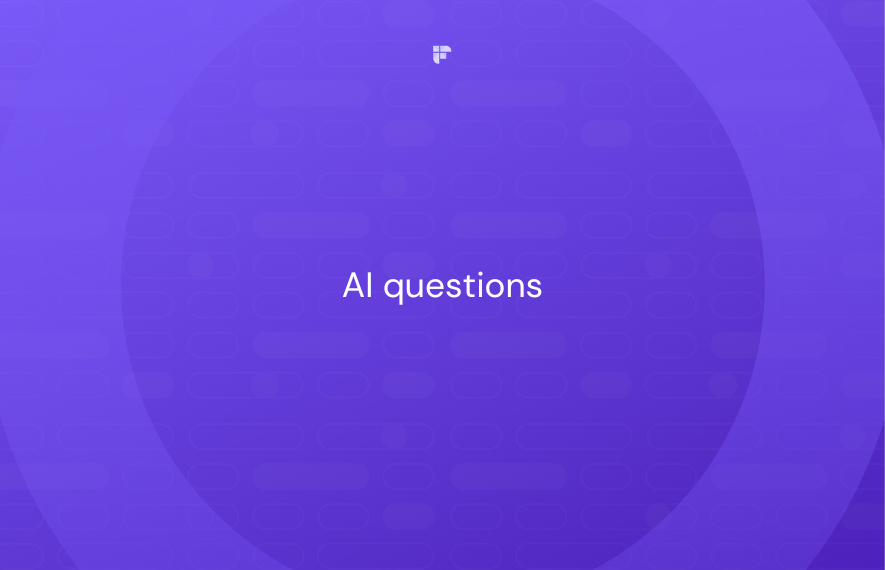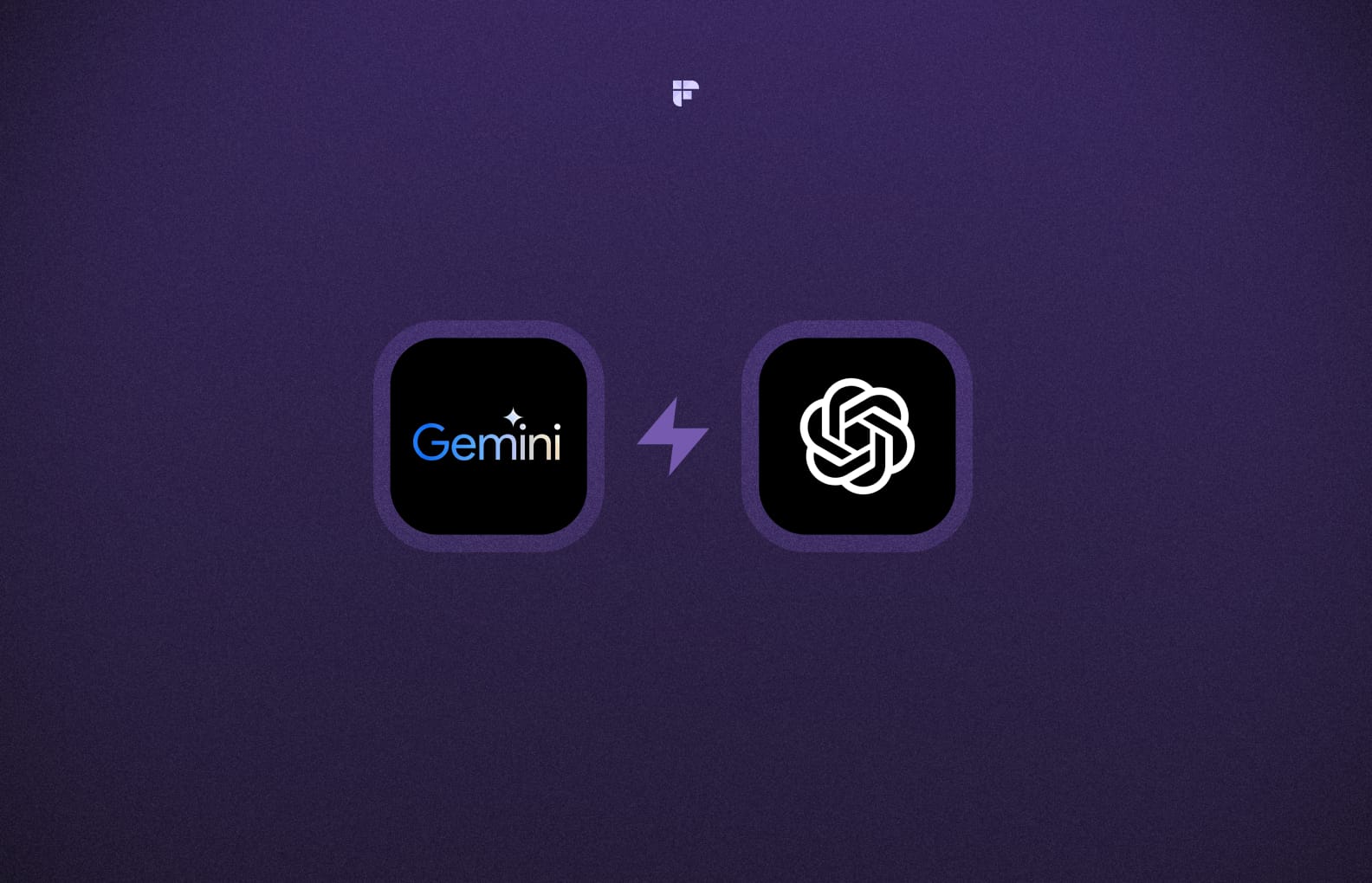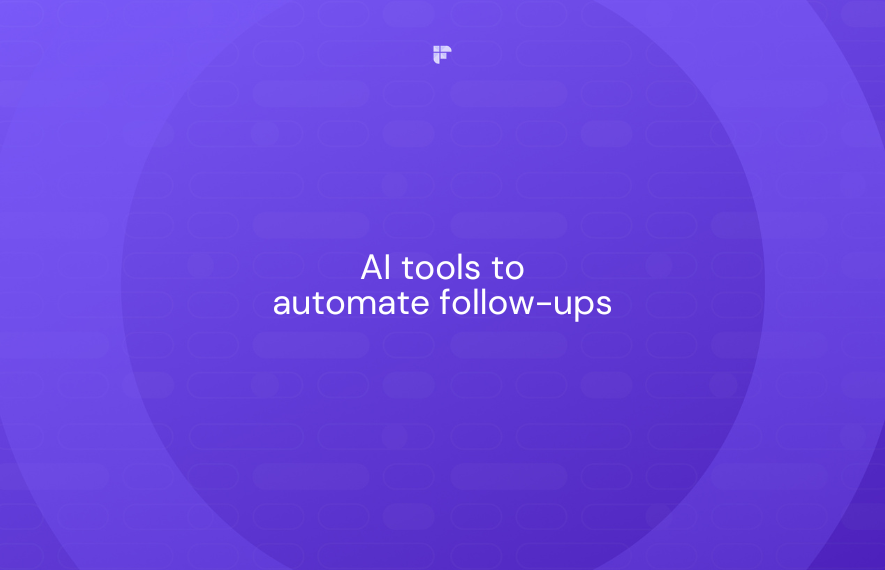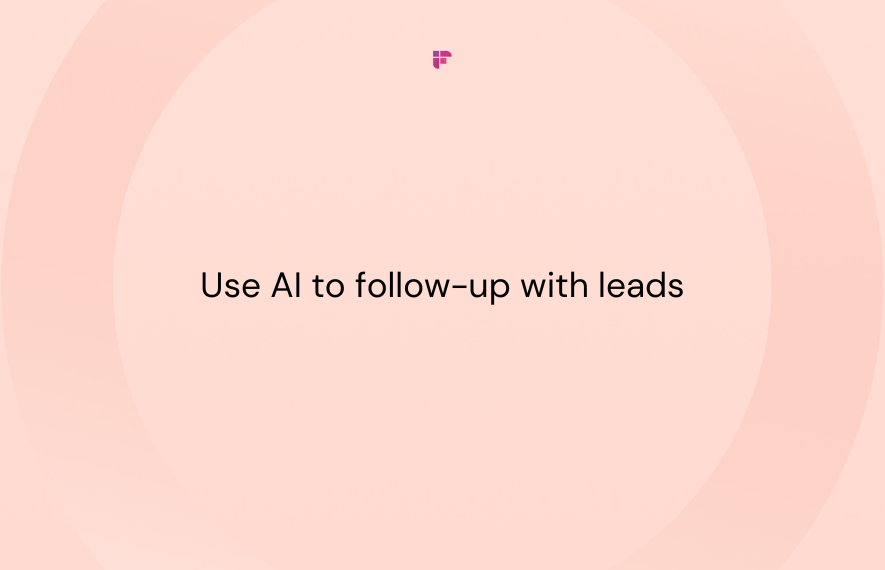Gemini vs. GPT-4: two leading artificial intelligence models that have made significant strides in natural language processing and generation.
As the demand for advanced AI capabilities continues to grow, it's essential to evaluate which is better.
This blog provides a detailed Gemini vs. GPT-4 comparison, evaluating their architectural differences, limitations, use cases, and potential real-world impact.
Table of contents:
- Key architectural differences that influence capabilities
- An expansive benchmark analysis across diverse tasks
- Real-world use cases
- Limitations and concerns
Let's dive in.
Gemini vs. GPT-4: Architectural differences
GPT-4
GPT-4 builds upon OpenAI's Generative Pre-trained Transformer (GPT) architecture from previous models like GPT-3. It massively scales up parameters compared to GPT-3’s 175 billion parameters.
Parameters are adjustable internal settings or variables that help the model understand and generate text. They determine the model's capability to understand and create language patterns. More parameters mean better capabilities.
Although OpenAI didn't disclose the exact number, reports suggest GPT-4 is trained on at least a trillion parameters, which is substantially higher than GPT-3.
Available GPT-4 models:
- GPT-4
- GPT-4 Turbo
- GPT-4V(ision), enabling users to analyze images
Gemini
Gemini utilizes Google's new Mixture-of-Experts (MoE) architecture structured into specialized expert modules, each trained on specific tasks or data types.
When you ask Gemini a question, it can choose the most relevant expert module to answer. This way, you get a response tailored to the specific topic you're interested in, similar to how you'd get the best answer from the relevant expert on your team.
For example, one expert module might focus on understanding text, another on analyzing images, and another on generating code. In some cases, multiple modules collaborate, depending on the need of the task.
Available Gemini models:
- Gemini Nano
- Gemini 1.0 Pro
- Gemini 1.0 Ultra
- Gemini 1.5 Pro (currently not available to the public)
Gemini 1.5 Pro's 1 million token context window is the highest of any language model so far. It's currently almost eight times higher than GPT-4. While Gemini currently leads the pack, the recently announced Claude 3 promises a context window of over 1 million tokens, if they choose to enable it for users, potentially leveling the playing field.
Gemini vs. GPT-4: Benchmark analysis
This is how Gemini and GPT-4 compare across various metrics as per Google’s technical report:
Benchmark comparison for text-based tasks
Gemini edges out GPT-4 in broader comprehension, logical reasoning, and creative text generation. GPT-4 is better for commonsense reasoning and everyday tasks.
Multimodal benchmark for image visuals
Gemini shows better creative cross-modal generation—visual and linguistic processing together. Conversely, GPT-4V's image analysis is just slightly behind.
Multimodal benchmark for video and audio
Summing up the benchmark comparison:
Gemini demonstrates superior creative generation for multimodal benchmarks combining text, images, video, and audio. It outperforms GPT-4V on benchmarks like TextVQA, DocVQA, VATEX, and more.
However, GPT-4V comes close to matching Gemini's visual analysis capabilities on benchmarks like AI2D and VQAv2.
In summary, Gemini shows broader and deeper language understanding, while GPT-4 specializes in logic, reasoning, and math. For multimodal tasks, Gemini leads in creative queries, while GPT-4V nearly matches it in visual analysis.
Gemini vs. GPT-4: Real-world use cases
Let's look at some use cases of Gemini and GPT-4:
Content creation
Both models can significantly enhance the efficiency and quality of content creation. They can craft marketing copies, generate educational material, emails, blog outlines, and more. Gemini has one edge over GPT-4: its access to the entire web, making it the better choice for tasks requiring up-to-date content. GPT-4, on the other hand, is limited to OpenAI’s training data.
Software development
Both models exhibit promising capabilities in code generation and understanding. Benchmarks show comparable performance, with Gemini (74.4%) slightly edging out GPT-4 (73.9%) in tasks like Python code generation.
However, GPT-4 might be better suited for specific coding tasks due to its focus on efficiency in text-based tasks.
Customer service
Chatbots powered by these models can offer enhanced customer support 24/7, addressing basic inquiries and resolving simple issues. This frees up human employees for more complex queries.
Gemini's multimodal capabilities might be beneficial for handling scenarios requiring image or video analysis. But, GPT-4's focus on safety and alignment could be better for unbiased and informative interactions.
Summarizing large text and documents
Large language models like Gemini and GPT-4 can summarize large text and documents. This can be incredibly valuable in various situations, such as:
- Research: Quickly grasp the critical points of lengthy research papers, articles, or reports.
- News and information overload: Condensing news articles, blog posts, or other lengthy online content to capture the gist without requiring extensive reading.
- Legal documents: Obtaining concise summaries of complex legal contracts or agreements.
- Business: Summarizing market research reports, meeting transcripts, financial statements, or other lengthy business documents.
💡 Summarize your online and offline meetings using Fireflies.ai
Fireflies is an AI notetaker that transcribes, summarizes, and analyzes your meeting conversations. It uses GPT-4 to create comprehensive summaries and notes, helping you review hour-long meetings in minutes.
Gemini vs. GPT-4: Limitations and concerns
Bias and fairness
Sundar Pichai, Google's CEO, addressed these Gemini mistakes in a memo to employees, labeling the issues as problematic. He said, “They have offended our users and shown biases.” He also said they are working on making Gemini more reliable and trustworthy to the users.
That said, both language models are trained on massive datasets that can contain inherent biases and reflect societal inequalities. These biases could manifest in the models' outputs, potentially resulting in discriminatory or unjust results.
Both OpenAI and Google are taking steps to mitigate biases.
Transparency and explainability
The inner workings of these complex models are unclear, making it challenging to understand how they arrive at their outputs. This lack of transparency can compromise trust and raise concerns among users. Fostering transparency and explainability in AI development is crucial for responsible use.
Gemini vs. GPT-4: Who wins?
Both Gemini and GPT-4 are huge advancements in AI. They each have clear strengths:
Gemini’s strengths:
- Better at combining text, images, video, and other formats (multimodal tasks)
- Generates up-to-date content
- The most advanced Gemini model has a content window of 1 million tokens
GPT-4’s strengths:
- More efficient and accurate at language tasks
- Edges out Gemini in tests of language understanding and common sense
- Generates safer and less biased content
- Has better speech recognition than Gemini
So, who wins overall? Well, that depends on your needs:
- For creative multimodal content, Gemini is likely unmatched
- For pure language mastery, GPT-4 still leads the way
Viewing both Gemini and GPT-4 as complementary advancements rather than rivals is a much more productive approach. They are both pushing the boundaries of AI capabilities. Understanding their strengths and limitations can allow us to leverage them effectively.










